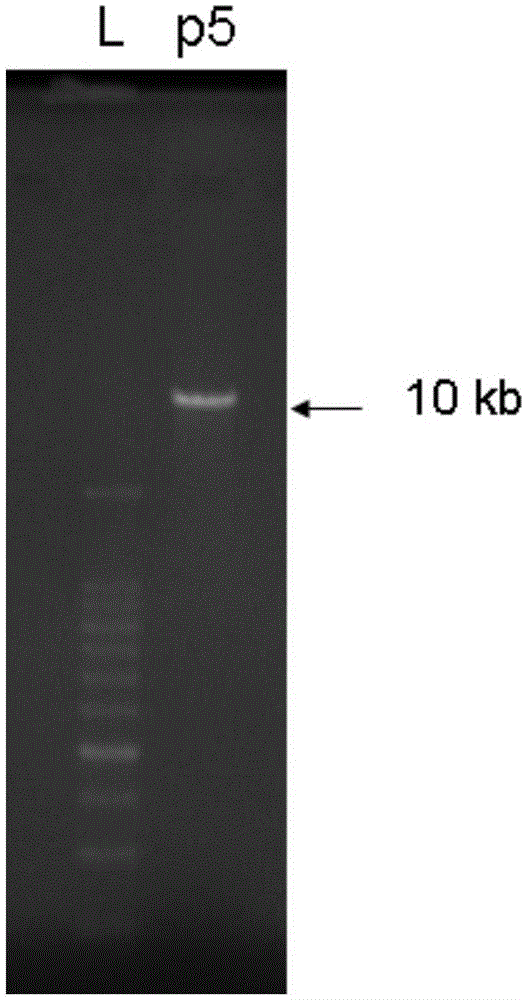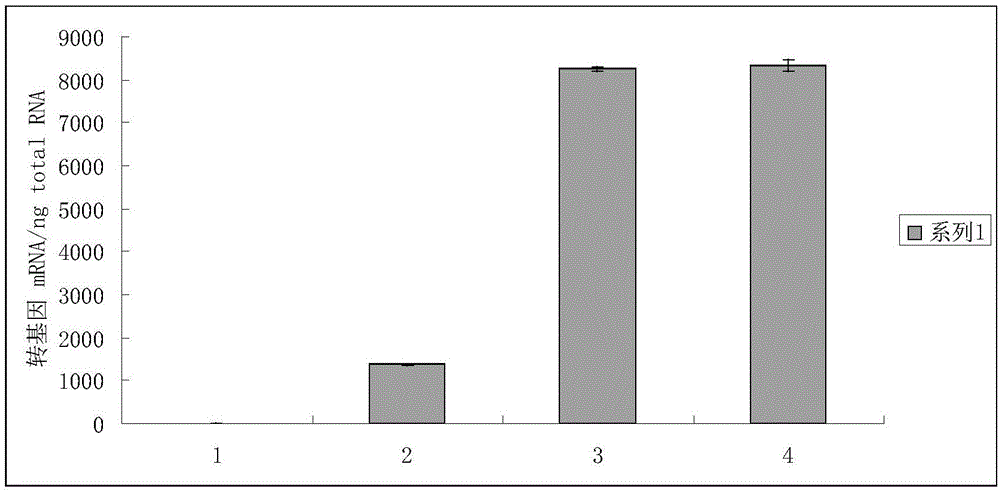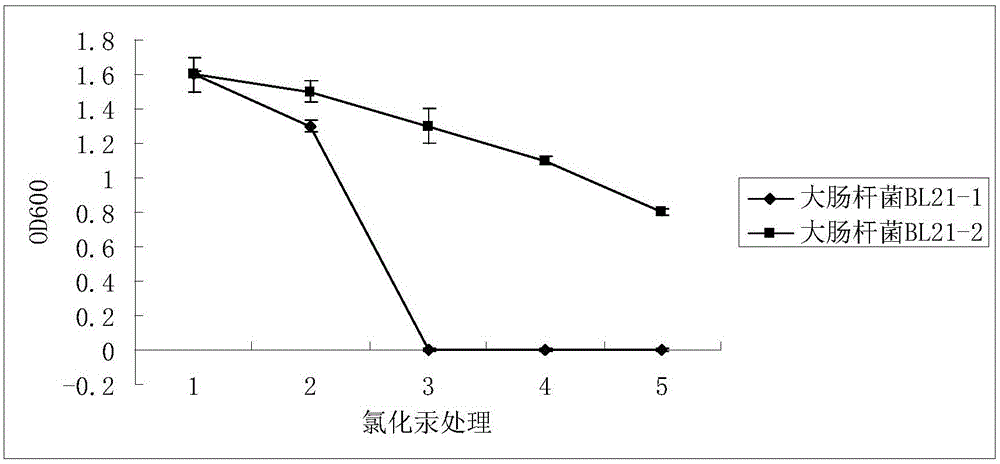A recombinant plasmid, construction method, recombinant engineering bacteria and application for removing mercury pollution from industrial wastewater
A technology of recombining plasmids and industrial wastewater, which is applied in the field of genetic engineering, can solve problems such as human harm, and achieve the effect of improving mercury tolerance and increasing the accumulation of mercury in cells
- Summary
- Abstract
- Description
- Claims
- Application Information
AI Technical Summary
Problems solved by technology
Method used
Image
Examples
Embodiment 1
[0049] According to the plasmids pmr26 (GenBank accession number: D83080.2) and pmr28 (GenBank accession number: AB013925.1) of Pseudomonas K-62 strain, TAKARA Company was commissioned to synthesize the artificial operon merT-merP-merB1-merB2, using NdeI and Plasmid pET28a (purchased from Shanghai Beinuo Biotechnology Co., Ltd.) was digested with NotI, and then recovered; the artificial operon merT-merP-merB1-merB2 was inserted into plasmid pET28a (purchased from From the region between NdeI and NotI of Shanghai Beinuo Biotechnology Co., Ltd., the specific operation process can be found in the In-FusionHDCloningKitUserManual (Clontech, Protocol number: PT5162-1). The ligation product was used to transform Escherichia coli DH5a, and to screen for kanamycin The resistant positive clones were cultured overnight, and the plasmids were extracted, and the plasmids whose results were identified as expected by restriction enzyme digestion and sequencing were named p1.
Embodiment 2
[0051] Enterobactera aerogenes (purchased from Shanghai Beinuo Biotechnology Co., Ltd.) was cultured in ordinary LB medium, and the culture conditions were 37°C and 180rpm shaking culture for 72h.
[0052] According to the ppk gene sequence of Enterobactera aerogenes (GenBank accession number: D14445.1), primers were designed to extract the genomic DNA of Enterobacter aerogenes. For details, please refer to the instruction manual of the Genomic DNA Extraction Kit of Enterobactera erogenes (Cat. No.: DP302-02 ). Using Enterobacter aerogenes genomic DNA as a template, the ppk gene was amplified. Primers are as follows:
[0053] PPPKF: 5'-ATAAGAAT GCGGCCGC ATTTACCACGTCCTGTGATT-3' (the underlined NotI restriction site)
[0054] PPPKR: 5'-CCGATCCG CTCGAG GGTTAATCGGGTTGCTCGAG-3' (underlined is the XhoI restriction site)
[0055] PCR reaction system: 2×PfuMasterMix (Beijing Kangwei Century Biotechnology Co., Ltd., product number: CW0686A) 25μl, primer PPPKF1pmol, primer PPPKR1...
Embodiment 3
[0059] 根据烟草叶绿体基因组DNA序列(GenBank登录号:Z00044.2)和大肠杆菌T7噬菌体基因10的5'UTR序列(OlinsandRangwala.AnovelsequenceelementderivedfrombacteriophageT7mRNAactsasanenhanceroftranslationofthelacZgeneinEscherichiacoli.TheJournalofBiologicalChemistry,1989,264(29):16973-16976),委托TAKARA公司合成 primers,
[0060] P1F: 5'-CGA CATATG GCTCCCCCGCCGTCGTTCAATGAGAATGGATAAGAGGCTCGTGGGATTGACGTGAGGGGGCAGGGATGGCTATATTTCTGGGAGCGAACTCCGGGCGAATACGAAGCGCTTGGATACAGTTGTAGGGAGGGATTTATCTTTTAACTTTAAGAAGGAG TGGCCA AGCGCTATTCGATC GAATTC GGAC-3' (The italic letters indicate the 5' end UTR sequence of E. coli T7 phage gene 10; the underline marks NdeI, BalI and EcoRI restriction sites)
[0061] P1R: 5'-GTCC GAATTC GATCGAATAGCGCT TGGCCA CTCCTTCTTAAAGTTAAAAGATAAATCCCTCCCTACAACTGTATCCAAGCGCTTCGTATTCGCCCGGAGTTCGCTCCCAGAAATATAGCCATCCCTGCCCCCTCACGTCAATCCCACGAGCCTCTTATCCATTCTCATTGAACGACGGCGGGGGAGC CATATG TCG-3' (the italic letters indicate the 5' UTR sequence of Escherichia coli T7 phage gene 10; the underline marks EcoRI, BalI ...
PUM
 Login to View More
Login to View More Abstract
Description
Claims
Application Information
 Login to View More
Login to View More - R&D
- Intellectual Property
- Life Sciences
- Materials
- Tech Scout
- Unparalleled Data Quality
- Higher Quality Content
- 60% Fewer Hallucinations
Browse by: Latest US Patents, China's latest patents, Technical Efficacy Thesaurus, Application Domain, Technology Topic, Popular Technical Reports.
© 2025 PatSnap. All rights reserved.Legal|Privacy policy|Modern Slavery Act Transparency Statement|Sitemap|About US| Contact US: help@patsnap.com



